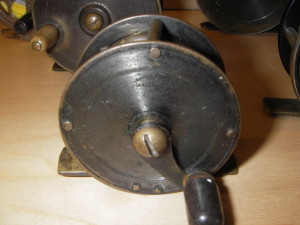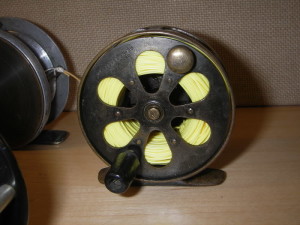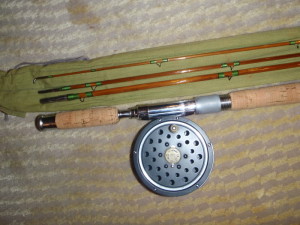Part of the fun of fishing with classic rods is pairing them with classic reels, especially when they’re from the same era. By the late 1800s, the simple “winch” used to store line had begun taking on the characteristics of modern reels, with adjustable drags, large arbors and handles mounted to the outer edge of the face plates or spools. Hardy, in England, “perfected” the ball-bearing race that was the one of the key features of its brass (later alloy) Perfect reel. One tier, or maybe only half a tier, down, William Dingley, a former Hardy reelmaker, followed suit. J.W. Young, of Redditch, a tackle-manufacturing center, built a wide range of reels, many for “the trade” — marked with the names of tackle sellers rather than the maker. In America, the Vom Hofe family, immigrants from Germany, focused on elegant, powerful reels with hard rubber side plates and nickle silver trimmings. By the 1920s, Pflueger and Heddon were producing popular but affordable reels that gave the average fisherman an alternative to the expensive Vom Hofes and Hardys. The venerable Pflueger Medalist was not as elegant as the Hardy Perfect, but it equipped many a middle-class fisherman’s rods, and like the Hardys, the vintage versions are still in wide use today.
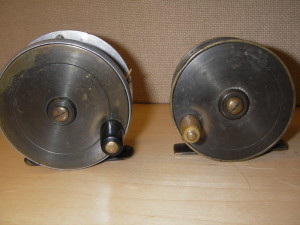
More reels possibly made by Heaton. On the left is a Pape of Newcastle brass and aluminum reel. The reel on the right is unmarked.
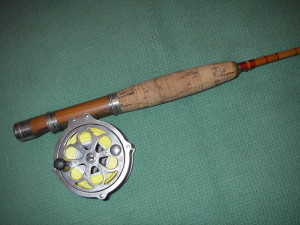
A Meisselbach 280 skeleton reel from the turn of the 20th century. The rod is an early Montague marked for the Andrew Harris department store of Providence, R.I.


Another early Meisselbach, an Expert 17 from the 1890s. The F.E. Thomas Dirigo rod dates from around the First World War.
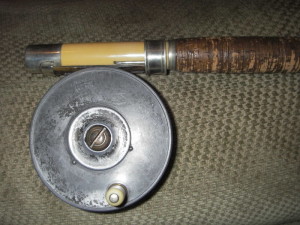
An early adjustable-drag reel, this Forrest of Kelso from Britain, c. 1910, is a good match for the 1890s-era 10-foot Kosmic.
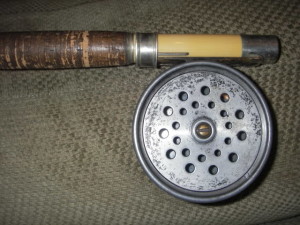
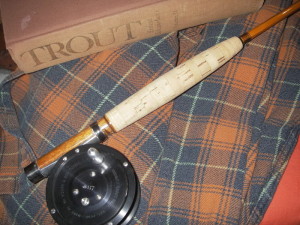
Henry McVickar, a New York manufacturer, bought an interest in the Payne Rod Co. after World War II. McVickar introduced this trout reel, the Bushkill, seen here on a 7 1/2-foot Payne 100. McVickar failed in his effort to get control of Payne, and sold his interest in the company.
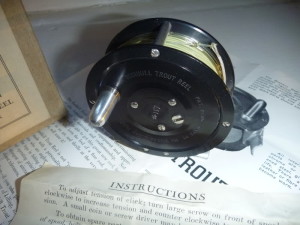
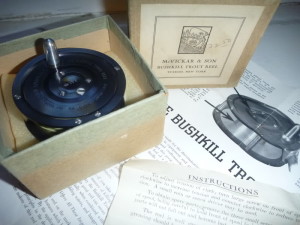

A grouping of Hardy Perfects. Perhaps the most famous fly reel in history, the Perfect was introduced in 1890 and has been in and out of production ever since.
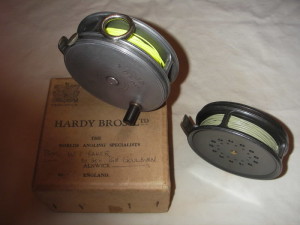
The box that the 3 5/8″ Perfect is sitting on says Hardy reels were made “by appointment” to King George V.
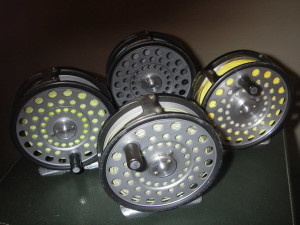
Another very popular Hardy reel, the LRH. It is commonly referred to as the Lightweight, although not all Lightweights are LRH’s. The reel comes in only one size, 3 3/16″.
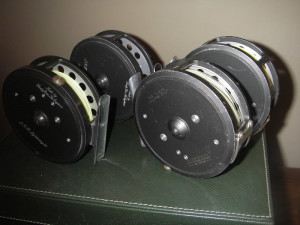
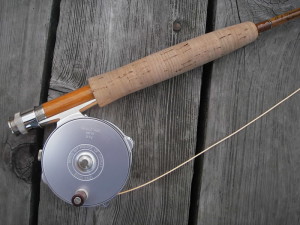
Hardy produced a series of modern versions of the Bougle reel. This is the 3 1/4″ Mark IV reel, on a 7’9 A.J. Thramer rod.
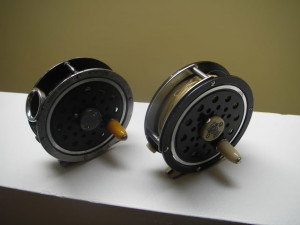
America’s counterpart to the Perfect, the durable Pflueger Medalist. If the Perfect is a Rolls Royce, the Medalist is a 57 Chevy Bel Air — less elegant, but very desirable and virtually indestructible. The original made-in-America Medalists are still going strong, some of them 90 years old.
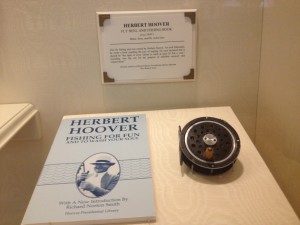
A Medalist 1494 (a 3 1/4″ model) that belonged to President Herbert Hoover. The display is from the Hall of Presidents at Disney World in Florida, not a place where I expected to come across a classic reel.

From 1924 to 1949, the Heddon company offered the 125 Imperial, an attractive 3 1/4″ trout reel that looks and works great on vintage rods. The rod on the left is an early gray model with an agate circular line guard. The model on the right is the final version, painted black and with an adjustable drag and a rolling pillar line guard.
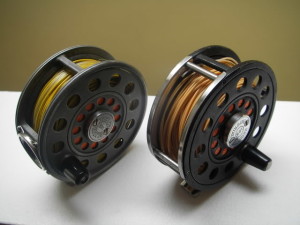
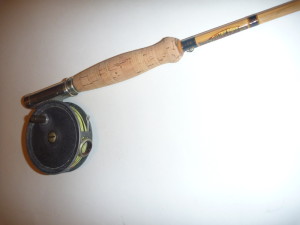
So-called red-agate reels from J.W. Young have a loyal following. Young reels were usually labeled with the names of retailers. This one bears the name J. Peek & Son. The rod is a G.E. Whaling from the early 1900s.

The J. Peek rod alongside a Lyon & Coulson Varden. L&C, based in Buffalo, sold “trade rods” made by Heddon as well as” trade reels” made by Young.
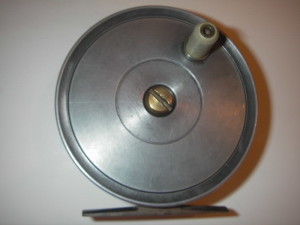
Another Young-made reel, this one a 3 3/8″ trout reel marked for Abbey & Imbrie, a New York tackle purveyor of the late 1800s and early 1900s.

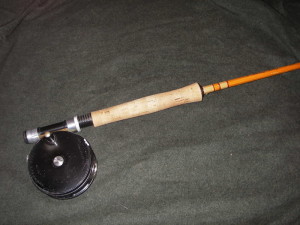
The Hardy Perfect attracted imitators. This Thompson 100 was made in San Francisco, as was the Winston rod it’s mounted on here.
